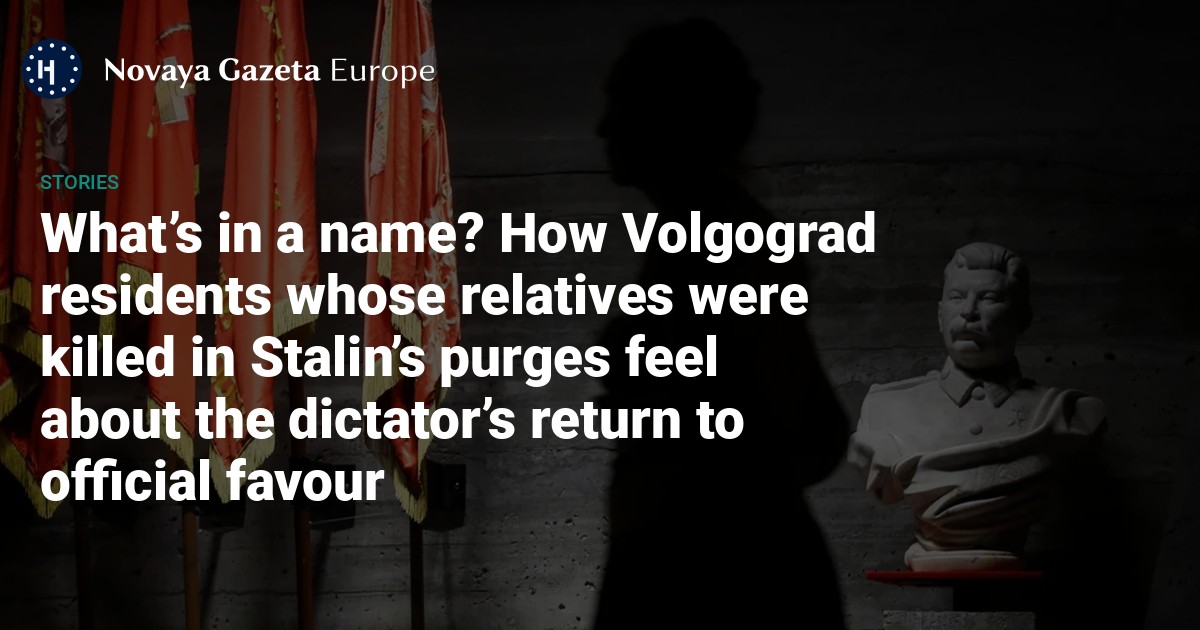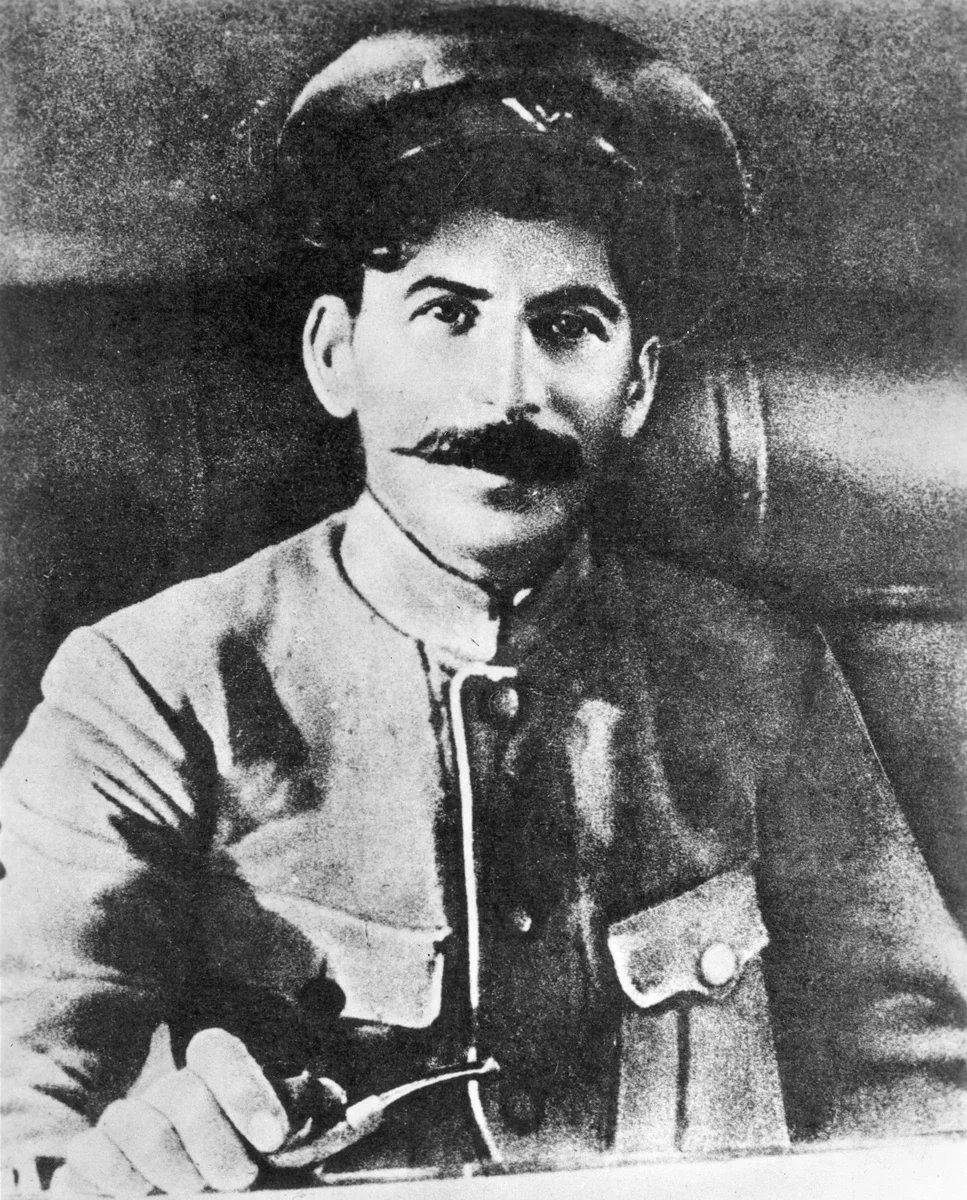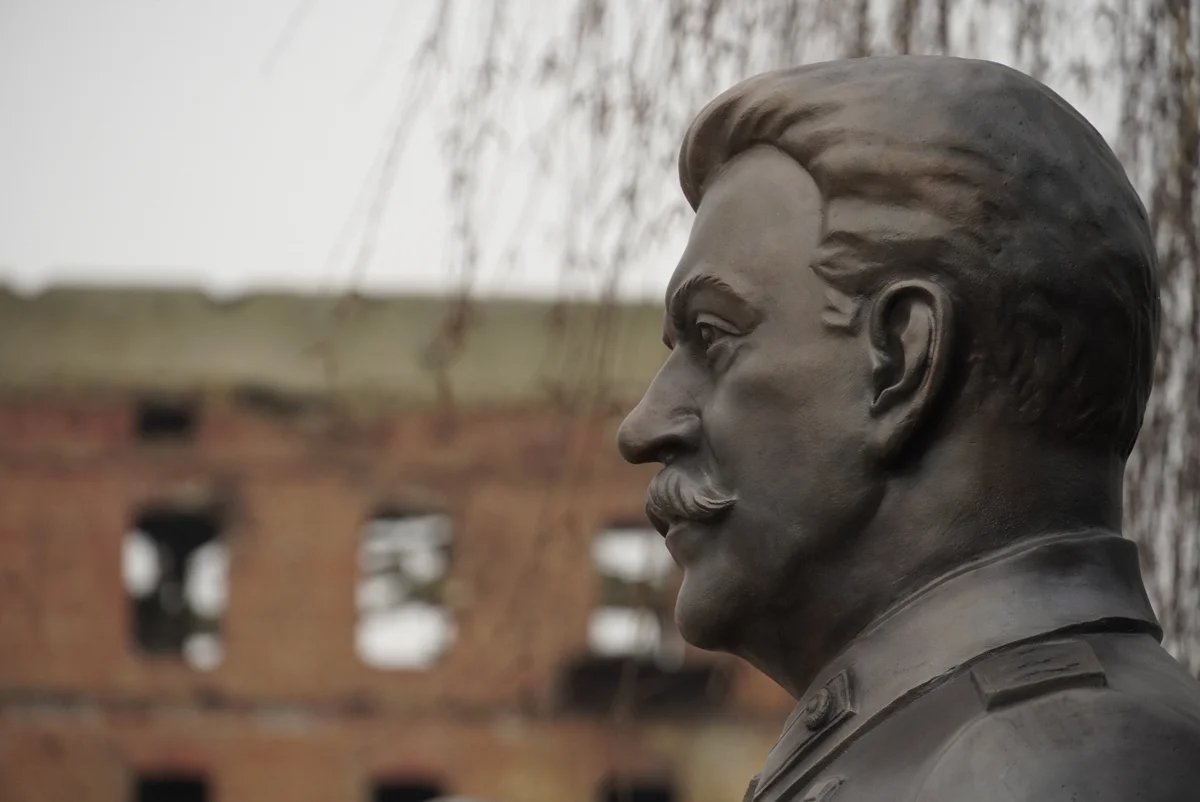



Volgograd — the Russian city formerly known as Stalingrad — has become something of a testing ground for the Kremlin’s recent efforts to rehabilitate the discredited figure of Soviet dictator Joseph Stalin. However, in an ironic twist of history, it was in this city that Stalin first tested out the use of famine and violent political repression, which went on to become the hallmarks of his tyranny.
Reporting on the unveiling of a new bust of Stalin in Volgograd in 2023, independent media outlet Caucasian Knot wrote that “soldiers and veterans saluted the bust of Stalin. An elderly woman kissed the granite pedestal and crossed herself. Attendees called the unveiling of the bust … ‘an act of historical and humanitarian justice’.”
Today, this city of over a million people leads the country in what has effectively become a national contest to positively reappraise Stalin’s long-tarnished image. Since February 2022, the Volgograd administration has followed the Kremlin’s lead to the letter, embracing the narrative of Stalin as a brilliant military leader who led the Soviet Union to victory against Nazi Germany during World War II.
The pace of these changes has been striking. Since the full-scale Russian invasion of Ukraine began three years ago, a statue of Stalin has been erected just 100 metres from Volgograd’s memorial to victims of political repression, his portraits and reliefs have also reappeared on the walls of the city’s medical university, a new technopark under construction near the Tsaritsa River was named Stalingrad, and, for several days each May, the city itself has temporarily reverted to its old name.
The city authorities have clearly decided that Stalin’s presence is essential, noting the “crucial role” he played in defeating the Wehrmacht and its allies during the battle of Stalingrad. That Stalin also obstructed and ultimately forbade the civilian evacuation of Stalingrad during World War II — a decision that cost thousands of lives — has gone largely unmentioned.
In June 1918, Lenin sent the young Stalin to the industrial city of Tsaritsyn, as Volgograd was known until 1925, to oversee grain deliveries to Moscow and central Russia. What Stalin did in Tsaritsyn in a matter of months is detailed in the writings of Volgograd-based historian and local studies expert Vyacheslav Yashchenko.

Joseph Stalin in Tsaritsyn, 1918. Photo: Granger / Shutterstock / Rex Features / Vida Press
“In just seven months in Tsaritsyn, Stalin shipped over 5,000 train wagons of food not only to central Russia but also to Red Turkestan and Baku. Lenin was pleased. The Soviet centre was saved from starvation!” wrote Yashchenko.
But Stalin’s so-called “anti-crisis” policies had severe consequences and by the end of 1918, most of the grain stocks in the Bolshevik-controlled south of Russia had been exhausted. In early 1919, shortly after Stalin left for Moscow, the Tsaritsyn region was beset by famine and epidemics.
As well as famine, Stalin also made full use of the violent political repression that would later become his stock-in-trade as part of his efforts to bring the restive city to heel. According to the Russian human rights group Memorial, in 1918 alone, at least 1,700 people were executed by the Cheka, the early Soviet secret police, in Tsaritsyn. The true number may have been far higher, however, as extrajudicial executions were often carried out off the books.
Speaking to Novaya Gazeta Kazakhstan, Yashchenko said that the number of people executed during Stalin’s time in Tsaritsyn was only an estimate. “No one kept proper records back then. It’s hard to say how widespread the repressions were, but they were substantial. Tsaritsyn was where Stalin first tested out his methods of terror. He left for a new post in Moscow in October 1918.”

Volgograd’s Monument to the Victims of Political Repression. Photo: Dinamik / Wikimedia
“Stalin returned to Tsaritsyn’s story in 1925, when the city was renamed Stalingrad,” Yashchenko continued. “Naturally, once he became involved, he took over the local leadership. That’s how Tsaritsyn became Stalingrad. Ironically, the group that had initially proposed renaming the city was later arrested and executed.”
The newly renamed city soon felt the full force of the Great Terror, as the mass repressions ordered by an increasingly paranoid and ruthless Stalin in the late 1930s are known. According to Memorial, hundreds of thousands of people in the city and the surrounding region were executed during this time. No group was spared: Volga Germans, Jews, priests, loyal communists, peasants, local political leaders, intellectuals and military commanders were all targeted.
In the 1990s, following the collapse of the Soviet Union, major efforts were made to rehabilitate Volgograd’s purge victims. “Many who sought rehabilitation for their relatives were able to access the city’s archives during that period,” local historian and specialist on Stalin-era repression Andrey Kudinov told Novaya Gazeta Kazakhstan. “But after the campaign ended, the authorities began destroying those same archival files — there were even rumours that they were simply dumped in skips.”
Vladimir Putin has said he would “consider” reverting to the city’s old name but added that the decision would ultimately rest with its residents.
Activists from the Volgograd Regional Association of Victims of Political Repression managed to recover the names of 250,000 people who had been imprisoned or executed in the region. Still, historians believe this figure is far from complete.
“Repressions in the region weren’t limited to arrests, gulags and executions,” said Kudinov, himself a descendant of peasants who were labelled “kulaks” — wealthier farmers deemed by the communists to be class enemies. “They also took the form of indirect terror — depriving people of their livelihoods and homes, pushing them to the brink of starvation.”
“These repressions were engineered — driven by manufactured class hatred,” he added. “So many lives were destroyed for nothing, so many destinies were ruined, so much humiliation. How large my family could have been were it not for these purges! It’s painful. Someone came up with a utopia, then forced people to believe in it and carry it out — at the cost of blood and suffering.”
In November 2022, a meeting of Volgograd’s city council was held to discuss a potential return to the name Stalingrad, with Volgograd Governor Andrey Bocharov, multiple regional deputies and pro-government municipal leaders all voicing their support for the idea. Participants claimed that a majority of the residents in attendance supported the name change — a claim contradicted by most data. Even the state-run Russian Public Opinion Research Center reported at the time that 67% of locals opposed the move, while only a quarter was in favour.
Vladimir Putin also said he would “consider” reverting to the city’s old name but added that the decision would ultimately rest with its residents. Nevertheless, in May he signed a decree temporarily renaming the city’s airport Stalingrad International Airport ahead of the 80th anniversary of the Soviet victory in World War II.
Despite the clear backing for the move in the corridors of power, Volgograd residents frequently take to social media and the comments section of news reports to express their opposition to renaming the city once again. Their main argument is that the city and its eponymous region are overwhelmed by unresolved problems — industrial decline, poverty, village depopulation, school closures, teacher shortages, and crumbling infrastructure — the solutions to which should take priority over something as purely symbolic as renaming the city for the fourth time in a century.

A bust of Joseph Stalin at the Battle of Stalingrad Museum and Memorial Complex in Volgograd, 1 February 2023. Photo: Vladimir Alexandrov / Anadolu Agency / Abaca Press / Vida Press
“I personally support restoring our city’s original name — Tsaritsyn,” Kudinov told Novaya Gazeta Kazakhstan. “But that won’t happen any time soon. Not in this lifetime. Right now though, state propaganda in favour of reverting to the name Stalingrad is falling on fertile ground and people are slowly being conditioned to accept that another renaming is inevitable.”
The only group in Volgograd still speaking openly about Stalinist repression is unofficial: a grassroots initiative affiliated with Memorial, the now-banned Russian human rights organisation. Comprising a handful of activists and volunteers, they publicly stated their opposition to the return of Stalin’s name to the city two years ago, calling the proposed move “not only offensive to residents whose ancestors suffered during the purges — or who simply lived in an atmosphere of fear — but dangerous for the city and the country as a whole.”
“The government is already using the same tools as Stalin: silencing dissent, curbing civil liberties and persecuting people for their political beliefs. Restoring Stalin’s name to our city … would signal to the world that Russia has gone back 70 years to Stalinist lawlessness.”
Needless to say, no one listened.
The Russian government has banned independent media. We were forced to leave our country in order to keep doing our job, telling our readers about what is going on Russia, Ukraine and Europe.
We will continue fighting against warfare and dictatorship. We believe that freedom of speech is the most efficient antidote against tyranny. Support us financially to help us fight for peace and freedom.
By clicking the Support button, you agree to the processing of your personal data.
To cancel a regular donation, please write to [email protected]
VPNovaya
Help Russians and Belarusians Access the Truth
